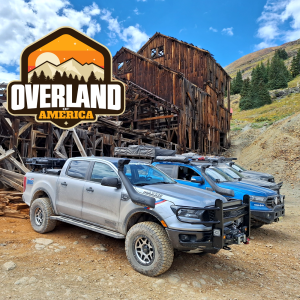I found this:
"Aero's have a weak marginal AWD system that is not designed to run with the transaxle clutch in lockup all the time.
You will know when the clutch kicks in by the computer. The first time it did on me I was pushing snow with the front bumper and slide off the road somewhere I should not have been, Oh S???, sat there for awhile red faced, put it back into drive, eased the gas on, the AWD clutch kicked in, the wife laughed from joy and away we went, right around a big real 4wdr Bronco that was in over his head and not going anywhere.
turned around and got the hell out of snowed in Dodge.
Transfer Case System, E-4WD
The Dana TC28 transfer case (7A195) is mounted on the rear of the transmission (7003) and operates full time. The control module, located under the driver's seat, actuates the transfer case clutch under adverse conditions.
The electronic four-wheel drive vehicle has engine torque available to all the wheels on a full-time basis. This improves vehicle handling and traction during difficult driving conditions.
The control module senses wheel slip and locks up the interaxle differential as necessary via an electromagnetic clutch. This is an automatic function and does not require any driver input.
The transfer case receives engine torque through the transmission. One third of the torque is sent to the front axle. Two thirds of the torque is sent to the rear axle. This torque split favoring the rear axle allows the vehicle to handle in the manner of a rear wheel drive vehicle but with the response of a front wheel drive vehicle. This function is made possible by use of a planetary gear differential.
The planetary gear differential delivers torque to the front and rear axles while allowing both axles to turn at different speeds. This is especially important when the vehicle is turning because it prevents driveline "wind-up." During difficult driving conditions (wet or slippery roads) the transfer case can send all necessary torque to the front or rear driving axles to maximize vehicle traction.
The control unit senses when a wheel is slipping and activates the electric clutch assembly in the transfer case. The electric clutch consists of an actuator coil, an armature and clutch pressure plates (7563). When the clutch pressure plates are compressed, the front and rear wheels rotate at the same speed and the front planet (7A398) does not operate. The control unit engages the clutch for approximately 3.3 seconds and then releases it. If wheel slip continues, the clutch will re-engage after approximately .5 seconds and will continue to cycle as long as slip conditions exist. The driver may notice a slight pushing or bumping sensation as vehicle traction increases.
The control unit will not allow the clutch to engage when both of the following conditions are present: the vehicle is going 8 km/h (5 mph) or faster and the service brakes are applied. Also, the clutch will not engage when the transmission selector is in the park or neutral positions."














